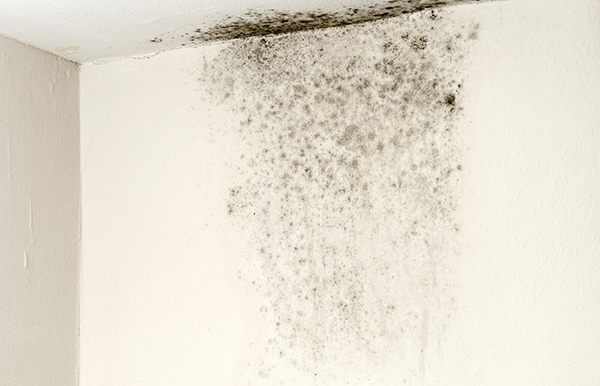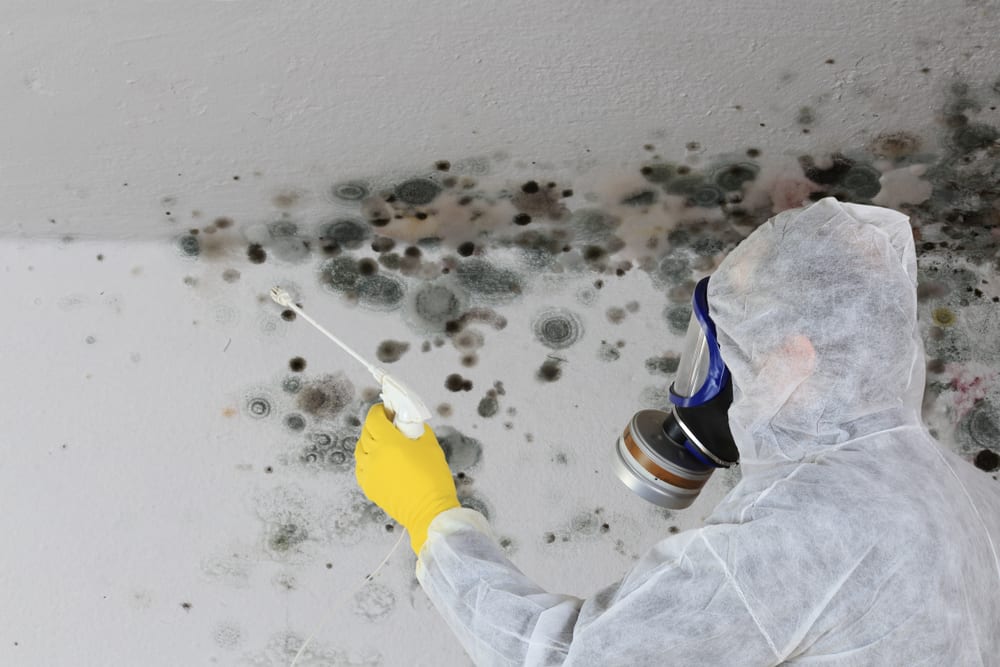Mold is a visible coating formed by microscopic molds that are able to survive in any conditions and on any surface. It is difficult to get rid of it, since it is able to penetrate the inside of objects with threads, and not just settle down on their surface.
The most difficult type of fungus to remove is black mold. It can appear anywhere in the house and in any quantity. Such mold can cause asthma attacks, allergies, respiratory diseases, so you need to get rid of it immediately.

Causes of mold
Mold thrives under the following conditions:
- humidity level — 60–80% (typical for bathrooms);
- temperature — 4–20 ° C;
- lack of ventilation in the room, draft.
In apartment buildings, mold often appears on the upper floors due to poor waterproofing of the roof and on the first floors due to a damp basement. If drywall was used during the construction of the house, then in this case the likelihood of the appearance and development of mold increases significantly.
The initial signs of mold are the smell of dampness, and then spots of plaque appear on various surfaces.
How to get rid of mold
You will need protective equipment — a respirator, gloves, goggles. Without them, you risk harming your health by inhaling the spores. You also need tools to remove plaque from the affected surface — a rag, brush, sandpaper, detergent.
The procedure is simple and consists of 3 steps:
- Remove plaque on the affected surface mechanically.
- Treat the area with your chosen anti-mold product.
- Dry the surface, ventilate the room well.
In the future, measures must be taken to prevent the recurrence of mold. Monitor the tightness and serviceability of all pipes, taps and valves in the apartment. If the bathroom wall faces the landing, carry out work on its insulation from the inside.
If cracks appear on the ceiling and walls, they must be eliminated. Interpanel seams need to be sealed — this will not only prevent the appearance of mold, but also insulate the room. For such work, you need to contact an employee of specialized companies.
Immediately after treatment, place the waste in an airtight bag and dispose of it immediately to prevent mold from spreading to new places in your home.
Ways to remove black mold

Surface treatment should be started as soon as visible signs of infection appear. If you delay, then after 12 months the fungus will pass through the plaster, brick, concrete, and then it will not be possible to get rid of it.
The right time for such events is the hot summer month. The room should be warm, ventilated.
Consider effective ways to get rid of black mold.
Bleach
Sodium hypochlorite is a non-toxic and non-aggressive agent, which is nevertheless fatal to black mold. It is enough to mix bleach with water in equal proportions and treat the tile or floor with it.
Do not use bleach on colored items, as the product may change their color.
Be sure to use protective equipment so that bleach does not get on the skin — even when diluted in water, it can cause severe burns. During surface treatment, all windows in the apartment must be open.
table vinegar
A weak acid solution kills 80% of molds. The advantage of the product is that it is not as toxic as the previous version, but leaves behind a specific odor that is difficult to remove.
Pour vinegar into a spray bottle and spray all surfaces that show signs of mold. After 30 minutes, rinse the treated surfaces with clean water, and then leave the apartment to ventilate for several hours — this will neutralize the pungent smell of vinegar.
To prevent the recurrence of mold, repeat the procedure every 7–10 days, treating problem areas in the apartment.
Hydrogen peroxide
Rinse moldy surfaces with peroxide and after 15 minutes scrub with a stiff bristled brush.
Hydrogen peroxide, like bleach, can discolor colored surfaces, so be careful.
Ammonia
This tool can only be used on non-porous surfaces of tiles, glass. Mix ammonia and water in equal amounts, pour the solution into a spray bottle and treat problem areas with it. After 4–5 hours, rinse the treated surfaces with plain water.
Attention! Do not mix ammonia and bleach. Such a composition is characterized by abundant toxic secretions that are dangerous to health.
Baking soda
Baking soda can be used both to eliminate mold and as a preventive measure. Add to 1 tbsp. l. water 1 tsp. soda and treat with a mixture of all infected places. Leave the mixture on the surfaces — it does not have toxic secretions and unpleasant odors, and it will also act as an excellent protection against the possible formation of mold in the future.
Bura
Clean the infected area with a vacuum cleaner, then prepare a mixture — 2.5 liters of water with 1 glass of borax. Mix the ingredients and wipe the problem areas. Next, remove excess moisture with a dry cloth. As in the case of soda, it is not necessary to eliminate the remnants of the product.
blue vitriol
Dissolve 100 g of copper sulfate in 10 liters of water and treat problem areas with it.
Please notethat the product can give the surface a slight blue tint.
What to do if the black mold has managed to deeply eat into the surface
If mold has spread under old wallpaper, you need to remove it from the walls. The same applies to the top layer of plaster — you have to get rid of it.
Next, treat the surface with a special solution and wait until it is completely dry. To restore the surface, use an antiseptic primer.
As soon as the work is completed, discard the rags, and soak the used tools and clothes for several hours in hot water, adding chlorine bleach.
After that, the walls must be treated with heat-insulating paint and waterproofing compounds. Then wallpaper them or apply paint.
How to eliminate moldy smell
If you have carried out a thorough treatment of the room from mold, but the specific smell still remains in the air, pour a little baking soda on the treated surface and leave it for 4–5 hours. Then remove the remaining baking soda with a vacuum cleaner.
Charcoal will also help. Put it in several containers for a couple of days and arrange it around the room.
Finally, airing the room, as well as aerosols, aroma candles, will help get rid of the smell.

Добавить комментарий
Для отправки комментария вам необходимо авторизоваться.